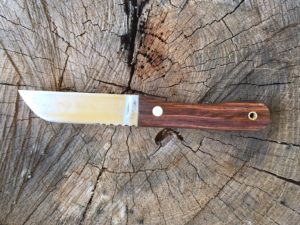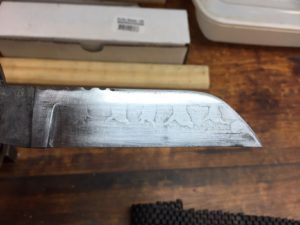I created a store site for my various knives, https://www.chapplecutler.com which I keep updated.
Sam
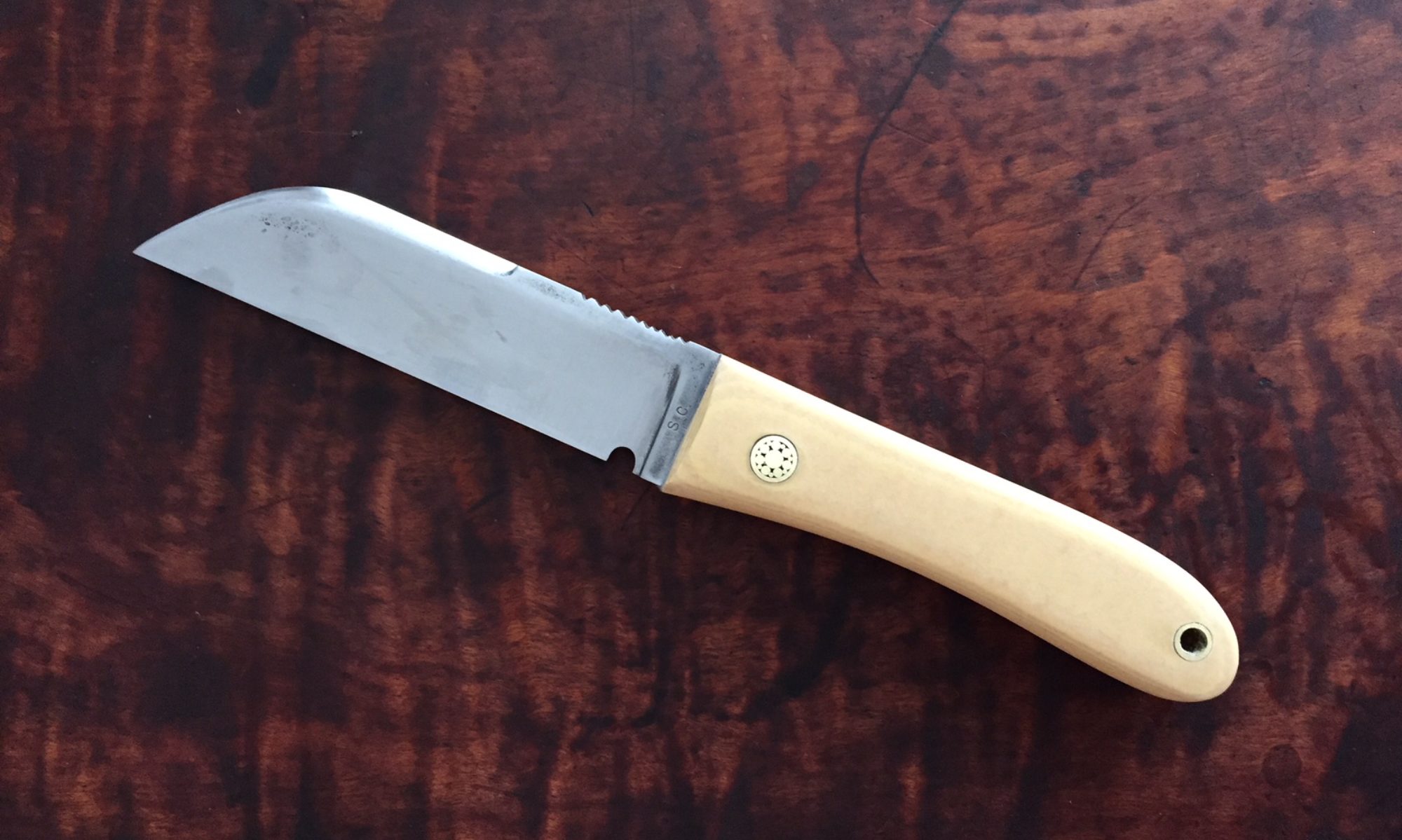
Knife lore and custom knives
I created a store site for my various knives, https://www.chapplecutler.com which I keep updated.
Sam
The marlin spike is a useful tool for the sailor. It helps separate knots, splice and braid lines aboard a boat. Rigging can be done on land too.
Marlinespike is a bit of an archaic word going back centuries. Basically a line spike, one of two tools a sailor carries. The other being a rigging knife.
I made these out of tool steel, rod O-1. I hammered out a 2 inch piece to 6 inches with the help of a forge. I drilled a hole and hardened the steel in oil. Then I then tempered it in an oven for 2 hours at 420 degrees to make it flexible and not brittle.
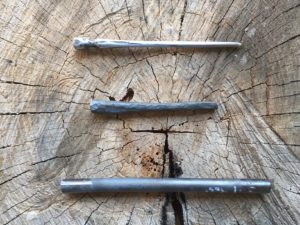
With a closer view of the forged marlin spike
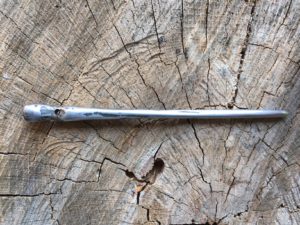
The first tanto knife, 6 inches, 1080 steel, Hamon. Green Canvas Micarta. I’m copying a Tanto I have in the unokubi-zukuri shape, armor piercing blade. handles. Brass fittings. Its the blade grind I’m working on. The tip becomes larger then the body to create rigidity. Blade is differently hardened. Which means the hardest part is on the blade edge.
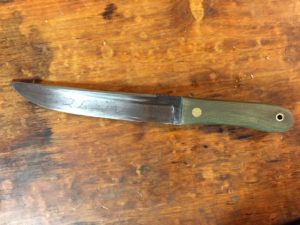
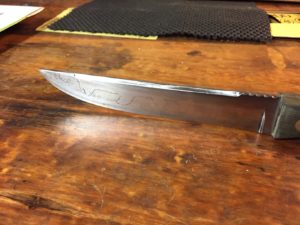
my next version
This one is in the tradition of a Japanese tanto, removable handle, Tsuba (guard) and a 6 inch differentially hardened knife blade.
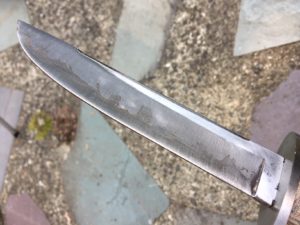
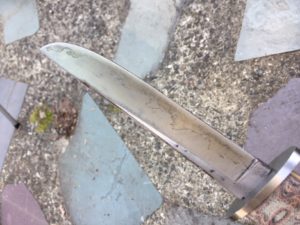
not the same knife but how I do the hamon in canola oil
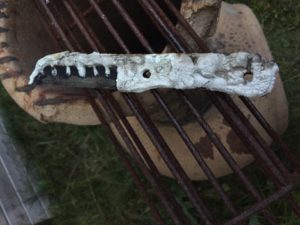
Into the handle which is a bit large here.
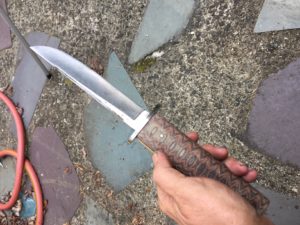
Had to re-epoxy the whole thing because of humidity. Scrap it and sand it..
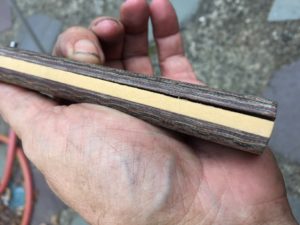
The final look. I added a pin to protect against shear force. The python canvas micarta with a bit of linseed oil added. its one of those materials that needs to be rounded as it tends to have a frayed surface.
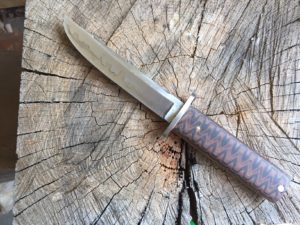
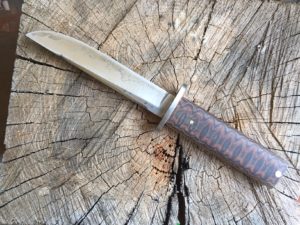
One of my ongoing projects is making a rigging knife. Wharncliffe style blade or more properly a sheepsfoot blade. It resembles a old Seax or Sax knife of Viking times The blade style has the advantage of a linear length of blade for slicing, especially cord and line, quickly. A strong spine for rugged use. Thumb notches for pressing down on blade. Also I’m differently hardening the blade with a clay like substance to control my hardening. I want the blade cutting edge part super hard for a very sharp cutting edge and a softer spine for making it springy instead of snapping. Depending on the steel, the Hamon (the differentiation between hard and softer steel grains). Its funny as my interest is independent of an apparent interest in the blade type for defensive uses. There are three different forms, the sheepsfoot blade, lambfoot (which has no piercing point) and a Wharncliffe which is a bit more pointy but originally a folding knife blade for whittling.
I started with a flat grind on this first rigging knife:
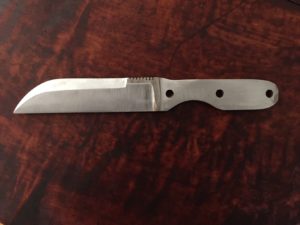
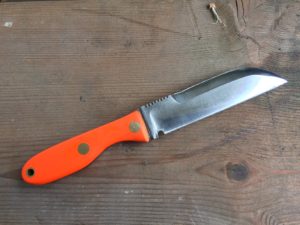
This is with O1 carbon steel and g10 slabs, 3.75 inch blade. 1/4 stock
My next version of a rigging knife was with a hollow grind, 3.75 inch blade, hollow ground with antique ivory paper micarta handles, O1 steel, 1/4 steel. Hardened differentially in the forge. Canola oil to quench.
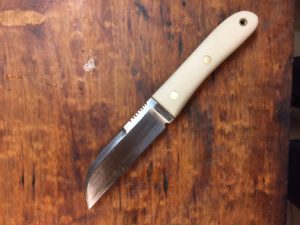
and my next Wharncliffe rigging knife, this with bone micarta and a patterned pin. Still with O1.
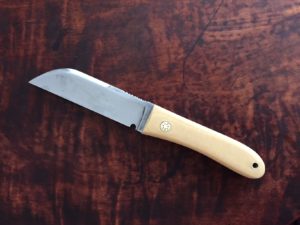
Then on to 1080 steel rigging knife, with G10 Ghost jade handles, hamon. Brass pin and lanyard hole. G10 is kind of messy with fiberglass.
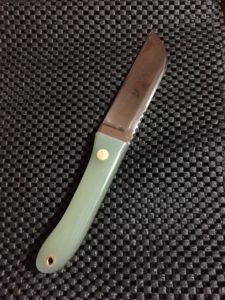
Some interesting activity in this knife.
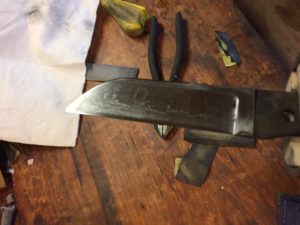
Almost looks like a scene from a Chinese scroll, water, islands, pines.
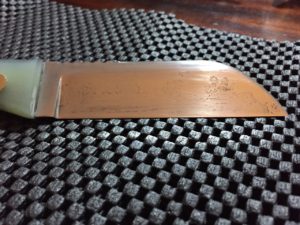
In Cocobolo, I changed over from trying to cut thumb notches and used jigging.
